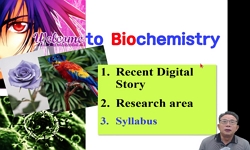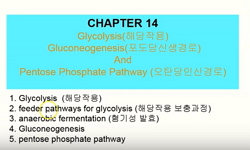Metabolic diseases, such as glucose intolerance and nonalcoholic fatty-liver disease (NAFLD), are primary risk factors for life-threatening conditions such as diabetes, heart attack, stroke, and hepatic cancer. Extracts from the tropical tree Moringa ...
http://chineseinput.net/에서 pinyin(병음)방식으로 중국어를 변환할 수 있습니다.
변환된 중국어를 복사하여 사용하시면 됩니다.
- 中文 을 입력하시려면 zhongwen을 입력하시고 space를누르시면됩니다.
- 北京 을 입력하시려면 beijing을 입력하시고 space를 누르시면 됩니다.



Fermented Moringa oleifera Decreases Hepatic Adiposity and Ameliorates Glucose Intolerance in High-Fat Diet-Induced Obese Mice
한글로보기https://www.riss.kr/link?id=A104515220
- 저자
- 발행기관
- 학술지명
- 권호사항
-
발행연도
2017
-
작성언어
English
- 주제어
-
등재정보
KCI등재,SCOPUS,SCIE
-
자료형태
학술저널
-
수록면
439-447(9쪽)
-
KCI 피인용횟수
10
- DOI식별코드
- 제공처
-
0
상세조회 -
0
다운로드
부가정보
다국어 초록 (Multilingual Abstract)
Metabolic diseases, such as glucose intolerance and nonalcoholic fatty-liver disease (NAFLD), are primary risk factors for life-threatening conditions such as diabetes, heart attack, stroke, and hepatic cancer. Extracts from the tropical tree Moringa oleifera show antidiabetic, antioxidant, anti-inflammatory, and anticancer effects. Fermentation can further improve the safety and nutritional value of certain foods. We investigated the efficacy of fermented M. oleifera extract (FM) against high-fat diet (HFD)-induced glucose intolerance and hepatic lipid accumulation and investigated the underlying mechanisms by analyzing expression of proteins and genes involved in glucose and lipid regulation. C57BL/6 mice were fed with normal chow diet (ND) or HFD supplemented with distilled water (DW, control), nonfermented M. oleifera extract (NFM), or FM for 10 weeks. Although body weights were similar among HFD-fed treatment groups, liver weight was decreased, and glucose tolerance test (GTT) results improved in the FM group compared with DW and NFM groups. Hepatic lipid accumulation was also lower in the FM group, and expressions of genes involved in liver lipid metabolism were upregulated. In addition, HFD-induced endoplasmic reticulum (ER) stress, oxidative stress, and lipotoxicity in quadriceps muscles were decreased by FM. Finally, proinflammatory cytokine mRNA expression was decreased by FM in the liver, epididymal adipose tissue, and quadriceps of HFD-fed mice. FMs may decrease glucose intolerance and NAFLD under HFDinduced obesity by decreasing ER stress, oxidative stress, and inflammation.
참고문헌 (Reference)
1 Fu S, "The role of endoplasmic reticulum in hepatic lipid homeostasis and stress signaling" 15 : 624-634, 2012
2 Schrauwen P, "The effect of weight reduction on skeletal muscle UCP2 and UCP3 mRNA expression and UCP3 protein content in Type II diabetic subjects" 43 : 1408-1416, 2000
3 Al-Malki AL, "The antidiabetic effect of low doses of Moringa oleifera Lam. Seeds on streptozotocin induced diabetes and diabetic nephrophthy in male rats" 2015 : 381040-, 2015
4 Salvado´ L, "Targeting endoplasmic reticulum stress in insulin resistance" 26 : 438-448, 2015
5 Waterman C, "Stable, water extractable isothiocyanates from Moringa oleifera leaves attenuate inflammation in vitro" 103 : 114-122, 2014
6 Jung IL, "Soluble extract from Moringa oleifera leaves with a new anticancer activity" 9 : e95492-, 2014
7 Stohs SJ, "Review of the safety and efficacy of Moringa oleifera" 29 : 796-804, 2015
8 Bosma M, "Reevaluating lipotoxic triggers in skeletal muscle : Relating intramyocellular lipid metabolism to insulin sensitivity" 51 : 36-49, 2012
9 Rieusset J, "Reduction of endoplasmic reticulum stress using chemical chaperones or Grp78overexpression does not protect muscle cells from palmitateinduced insulin resistance" 417 : 439-445, 2012
10 Ji C, "Postnatal overfeeding promotes early onset and exaggeration of high-fat diet-induced nonalcoholic fatty liver disease through disordered hepatic lipid metabolism in rats" 25 : 1109-1116, 2014
1 Fu S, "The role of endoplasmic reticulum in hepatic lipid homeostasis and stress signaling" 15 : 624-634, 2012
2 Schrauwen P, "The effect of weight reduction on skeletal muscle UCP2 and UCP3 mRNA expression and UCP3 protein content in Type II diabetic subjects" 43 : 1408-1416, 2000
3 Al-Malki AL, "The antidiabetic effect of low doses of Moringa oleifera Lam. Seeds on streptozotocin induced diabetes and diabetic nephrophthy in male rats" 2015 : 381040-, 2015
4 Salvado´ L, "Targeting endoplasmic reticulum stress in insulin resistance" 26 : 438-448, 2015
5 Waterman C, "Stable, water extractable isothiocyanates from Moringa oleifera leaves attenuate inflammation in vitro" 103 : 114-122, 2014
6 Jung IL, "Soluble extract from Moringa oleifera leaves with a new anticancer activity" 9 : e95492-, 2014
7 Stohs SJ, "Review of the safety and efficacy of Moringa oleifera" 29 : 796-804, 2015
8 Bosma M, "Reevaluating lipotoxic triggers in skeletal muscle : Relating intramyocellular lipid metabolism to insulin sensitivity" 51 : 36-49, 2012
9 Rieusset J, "Reduction of endoplasmic reticulum stress using chemical chaperones or Grp78overexpression does not protect muscle cells from palmitateinduced insulin resistance" 417 : 439-445, 2012
10 Ji C, "Postnatal overfeeding promotes early onset and exaggeration of high-fat diet-induced nonalcoholic fatty liver disease through disordered hepatic lipid metabolism in rats" 25 : 1109-1116, 2014
11 Rains JL, "Oxidative stress, insulin signaling, and diabetes" 50 : 567-575, 2011
12 Henriksen EJ, "Oxidative stress and the etiology of insulin resistance and type 2 diabetes" 51 : 993-999, 2011
13 Rinella ME, "Nonalcoholic fatty liver disease : A systemic review" 313 : 2263-2273, 2015
14 Gaggini M, "Non-alcoholic fatty liver disease(NAFLD)and its connection with insulin resistance, dyslipidemia, atherosclerosis and coronary heart disease" 5 : 1544-1560, 2013
15 Flamment M, "New insights into ER stress-induced insulin resistance" 23 : 381-390, 2012
16 Byrne CD, "NAFLD: A multisystem disease" 68 : S47-S64, 2015
17 Olayaki LA, "Methanolic extract of Moringa oleifera leaves improves glucose tolerance, glycogen synthesis and lipid metabolism in alloxan-induced diabetic rats" 26 : 585-593, 2015
18 Ford RJ, "Metformin and salicylate synergistically activate liver AMPK, inhibit lipogenesis and improve insulin sensitivity" 468 : 125-132, 2015
19 Højlund K, "Metabolism and insulin signaling in common metabolic disorders and inherited insulin resistance" 61 : B4890-, 2014
20 Mead JR, "Lipoprotein lipase : Structure, function, regulation, and role in disease" 80 : 753-769, 2002
21 Waterman C, "Isothiocyanaterich Moringa oleifera extract reduces weight gain, insulin resistance, and hepatic gluconeogenesis in mice" 59 : 1013-1024, 2015
22 Wilson CG, "Hepatocyte-specific disruption of CD 36 attenuates fatty liver and improves insulin sensitivity in HFD-fed mice" 157 : 570-585, 2016
23 Alberdi G, "Hepatic lipid metabolic pathways modified by resveratrol in rats fed an obesogenic diet" 29 : 562-567, 2013
24 Strable MS, "Genetic control of de novo lipogenesis : Role in diet-induced obesity" 45 : 199-214, 2010
25 Bergman RN, "Free fatty acids and pathogenesis of type 2 diabetes mellitus" 11 : 351-356, 2000
26 Bourdichon F, "Food fermentations : Microorganisms with technological beneficial use" 154 : 87-97, 2012
27 Dai F, "Fenofibrate improves high-fat diet-induced and palmitateinduced endoplasmic reticulum stress and inflammation in skeletal muscle" 157 : 158-167, 2016
28 Zechner R, "FAT SIGNALS-lipases and lipolysis in lipid metabolism and signaling" 15 : 279-291, 2012
29 Di Cagno R, "Exploitation of vegetables and fruits through lactic acid fermentation" 33 : 1-10, 2013
30 Tumer TB, "Direct and indirect antioxidant activity of polyphenol-and isothiocyanate-enriched fractions from Moringa oleifera" 63 : 1505-1513, 2015
31 Castro G, "Diet-induced obesity induces endoplasmic reticulum stress and insulin resistance in the amygdala of rats" 3 : 443-449, 2013
32 Leone A, "Cultivation, genetic, ethnopharmacology, phytochemistry and pharmacology of Moringa oleifera leaves : An overview" 16 : 12791-12835, 2015
33 Bennett WL, "Comparative effectiveness and safety of medications for type 2 diabetes : An update including new drugs and 2-drug combinations" 154 : 602-613, 2011
34 Wu Y, "Chronic inflammation exacerbates glucose metabolism disorders in C57BL/6J mice fed with highfat diet" 219 : 195-204, 2013
35 Madiraju AK, "Argininosuccinate synthetase regulates hepatic AMPK linking protein catabolism and ureagenesis to hepatic lipid metabolism" 113 : E3423-E3430, 2016
36 Gautam J, "An isoflavone cladrin prevents high-fat diet-induced bone loss and inhibits the expression of adipogenic gene regulators in 3T3-L1 adipocyte" 68 : 1051-1063, 2016
37 Gautam S, "Aegeline from Aegle marmelos stimulates glucose transport via Akt and Rac1 signaling, and contributes to a cytoskeletal rearrangement through PI3K/Rac1" 762 : 419-429, 2015
38 Ouwehand AC, "Advances in Fermented Foods and Beverages" Elsevier 3-22, 2016
39 Zhang BB, "AMPK : An emerging drug target for diabetes and the metabolic syndrome" 9 : 407-416, 2009
40 van Dijk SJ, "A saturated fatty acidrich diet induces an obesity-linked proinflammatory gene expression profile in adipose tissue of subjects at risk of metabolic syndrome" 90 : 1656-1664, 2009
41 Liu Q, "1-Deoxynojirimycin alleviates insulin resistance via activation of insulin signaling PI3K/AKT pathway in skeletal muscle of db/db mice" 20 : 21700-21714, 2015
동일학술지(권/호) 다른 논문
-
- 한국식품영양과학회
- 박보경
- 2017
- KCI등재,SCOPUS,SCIE
-
- 한국식품영양과학회
- 주희경
- 2017
- KCI등재,SCOPUS,SCIE
-
- 한국식품영양과학회
- Chunmei Li
- 2017
- KCI등재,SCOPUS,SCIE
-
- 한국식품영양과학회
- YuJiao Tang
- 2017
- KCI등재,SCOPUS,SCIE
분석정보
인용정보 인용지수 설명보기
학술지 이력
| 연월일 | 이력구분 | 이력상세 | 등재구분 |
|---|---|---|---|
| 2023 | 평가예정 | 해외DB학술지평가 신청대상 (해외등재 학술지 평가) | |
| 2020-01-01 | 평가 | 등재학술지 유지 (해외등재 학술지 평가) |  |
| 2014-06-24 | 학회명변경 | 한글명 : 한국식품영양과학회지 -> 한국식품영양과학회영문명 : Journal of the Korean Society of Food Science and Nutrition -> The Korean Society of Food Science and Nutrition |  |
| 2014-04-02 | 학회명변경 | 한글명 : 한국식품영양과학회 -> 한국식품영양과학회지영문명 : 미등록 -> Journal of the Korean Society of Food Science and Nutrition |  |
| 2013-10-01 | 평가 | SCOPUS 등재 (등재유지) |  |
| 2010-01-01 | 평가 | SCI 등재 (등재유지) |  |
| 2007-01-01 | 평가 | 등재학술지 선정 (등재후보2차) |  |
| 2006-01-01 | 평가 | 등재후보 1차 PASS (등재후보1차) |  |
| 2005-01-20 | 학술지등록 | 한글명 : Journal of Medicinal Food외국어명 : Journal of Medicinal Food |  |
| 2005-01-20 | 학술지등록 | 한글명 : Journal of Medicinal Food외국어명 : Journal of Medicinal Food |  |
| 2004-01-01 | 평가 | 등재후보학술지 선정 (신규평가) |  |
학술지 인용정보
| 기준연도 | WOS-KCI 통합IF(2년) | KCIF(2년) | KCIF(3년) |
|---|---|---|---|
| 2016 | 1.88 | 0.33 | 1.35 |
| KCIF(4년) | KCIF(5년) | 중심성지수(3년) | 즉시성지수 |
| 1.09 | 0.84 | 0.536 | 0.08 |




 KCI
KCI




